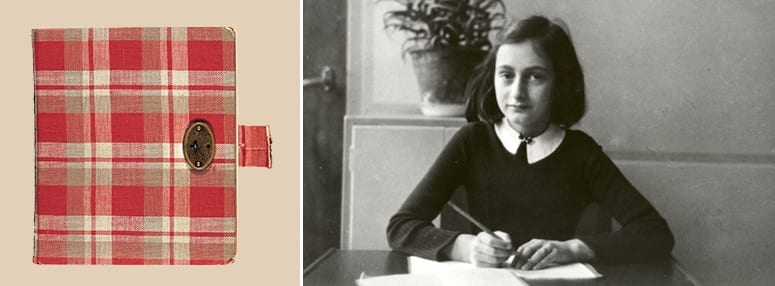

The events recounted in Anne Frank's diary take place during World War II, in which almost all the countries of Europe, as well as the U.S.A. And so, although Anne died, as the Nazis had intended, her spirit lives on, through her Diary, stronger and clearer by far than any brute force or blind hatred. Frank returned after the war, they gave him the pages of Anne's diary, and he eventually published them. The pages of Anne's diary, which the Nazis left scattered on the floor when they arrested the group in hiding, were kept by the two young women who had worked in the office and had faithfully supplied the little group with food and other provisions. Of all the eight people who hid in the "Secret Annexe" in Amsterdam, only Anne's father survived. Although the world of that period is divided from us by more than mere years, Anne's voice is very contemporary, and many of her thoughts and problems are very much like those of any youngster growing up both then and now.Īnne Frank did not survive the concentration camps to which she was sent after her little group was discovered. In fact, Anne chattered so much that, as a punishment for her talkativeness, she had to write several essays on the subject of "A Chatterbox." Much of this chatty quality of hers, however, spills over onto the pages of her diary, where we often feel as if she is a good friend who is confiding in us. Anne went to school, had girl friends and boyfriends, went to parties and to ice-cream parlors, rode her bike, and chattered (an understatement) in class. In the few entries which she wrote before the family went into hiding, we discover something of the world of a child growing up in Holland in 1942.

Anne franks diary movie#
She loved life and laughter, was interested in history and movie stars, Greek mythology, and cats, writing, and boys.

And it is also a vividly terrifying description of what it was like to be a Jew - and in hiding - at a time when the Nazis sought to kill all the Jews of Europe.Ībove all, Anne was an ordinary girl, growing up, and eventually dying, but she was an ordinary girl growing up in extraordinary times. It is an accurate record of the way a young girl grows up and matures, in the very special circumstances in which Anne found herself throughout the two years during which she was in hiding. It is an amusing, enlightening, and often moving account of the process of adolescence, as Anne describes her thoughts and feelings about herself and the people around her, the world at large, and life in general. The Diary is many things at one and the same time. During the day, when people worked in the office and in the warehouse below, Anne and the others had to keep very quiet, but at night they could move around more freely, though of course they could not turn on any lights nor show in any way that the house was inhabited. Düssel, Anne lived in a set of rooms at the top of an old warehouse in Amsterdam, Holland, concealed behind a hidden door and a bookcase. Together with her parents and her sister, Margot, the Van Daan family (consisting of a husband, a wife, and a son, Peter, two years older than Anne) and, later on, an elderly dentist named Mr. Between June 1942 and August 1944, from Anne's thirteenth birthday until shortly after her fifteenth birthday, Anne Frank recorded her feelings, her emotions, and her thoughts, as well as the events that happened to her, in the diary which her father had given her as a birthday present. It is the diary kept by a young Jewish girl for the two years she was forced to remain in hiding by the Nazi persecution of the Jews of Europe. Anne Frank's Diary is not a novel or a tale of the imagination.


 0 kommentar(er)
0 kommentar(er)
